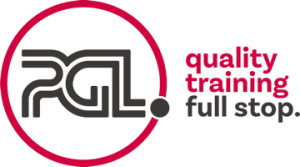A Guide to Using Abrasive Wheels and Tools
Introduction
In industries where precision cutting and grinding are routine, abrasive wheels and associated tools play a pivotal role. However, their use comes with significant risks that demand a thorough understanding of safety protocols. In this blog, we’ll explore the hazards linked with abrasive wheel operations, the essential UK controls for hazard management, relevant Health and Safety legislation, and why proper training is crucial for a safer workplace.
Identifying Hazards When Using Abrasive Wheels: The Dangers Lurking
Abrasive wheels are potent tools designed for cutting, grinding, and polishing various materials. But their power comes with hazards. The main risks associated with abrasive wheel use include:
- Wheel Breakage: Abrasive wheels can fracture, causing flying fragments that pose a serious danger to operators and bystanders.
- Vibration and Noise: Prolonged use can lead to hand-arm vibration syndrome (HAVS) and exposure to excessive noise levels.
- Dust and Particles: The cutting process generates fine dust and particles, which can lead to respiratory problems if inhaled.
- Incorrect Mounting: Wheels that aren’t properly mounted can lead to accidents during operation.
Managing Hazards When Using Abrasive Wheels: UK Controls and Guidelines
To ensure safe use of abrasive wheels and associated tools, the UK follows stringent controls as outlined in PUWER (Provision and Use of Work Equipment Regulations) and HSG 17 (Health and Safety Guidance 17). These include:
- Thorough Examination: Regular inspections of tools, ensuring they’re fit for purpose and safe to use.
- Proper Mounting and Balancing: Wheels must be correctly mounted, aligned, and balanced to prevent accidents.
- Use of Personal Protective Equipment (PPE): Operators should wear appropriate PPE like eye protection, hearing protection, and dust masks.
- Safe Work Environment: Adequate ventilation and dust extraction systems should be in place to minimize exposure to harmful dust.
- Training: Only trained and competent individuals should operate abrasive wheels and tools.
Health and Safety Legislation and Guidance
The UK Health and Safety at Work Act (1974) places the responsibility on employers to provide a safe working environment. PUWER specifically addresses work equipment safety, including abrasive wheels. The COSHH (Control of Substances Hazardous to Health) Regulations require employers to control exposure to hazardous substances, including dust generated during abrasive wheel use.
Training For Abrasive Wheels Operation: Empowering Safety
Receiving proper training is the linchpin of safe abrasive wheel operation. Benefits include:
- Risk Mitigation: Training equips workers with the skills to recognise and respond to potential hazards, minimising the likelihood of accidents.
- Regulatory Compliance: Trained operators ensure compliance with UK safety regulations and guidelines, reducing legal liabilities for employers.
- Personal Protection: Training emphasises the importance of PPE, safeguarding workers from potential injuries and health issues.
- Efficiency: Competently trained operators work more efficiently, contributing to a smoother workflow and enhanced productivity.
Conclusion: Prioritising Safety
Abrasive wheels and associated tools are indispensable for various industries, but their power demands respect and caution. By understanding hazards, adhering to UK controls, and abiding by legislation, we can ensure that workplaces remain safe and productive. Training, as the cornerstone of safe practice, empowers workers to navigate potential risks with confidence. Together, these elements create a secure environment where precision and safety go hand in hand, setting a standard for responsible work practices in every abrasive wheel operation.
Book Online: Abrasive Wheels Awareness Course
